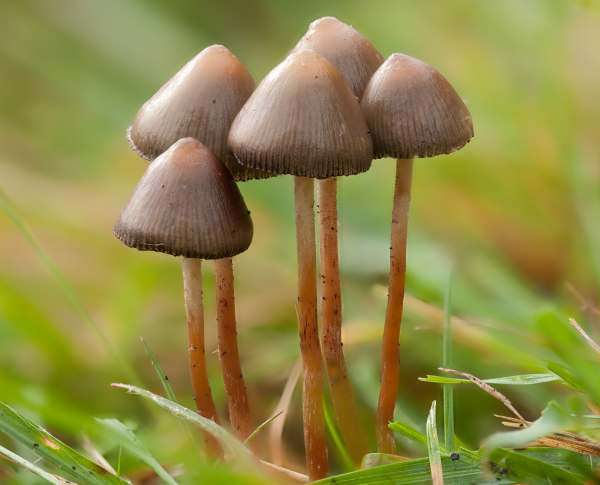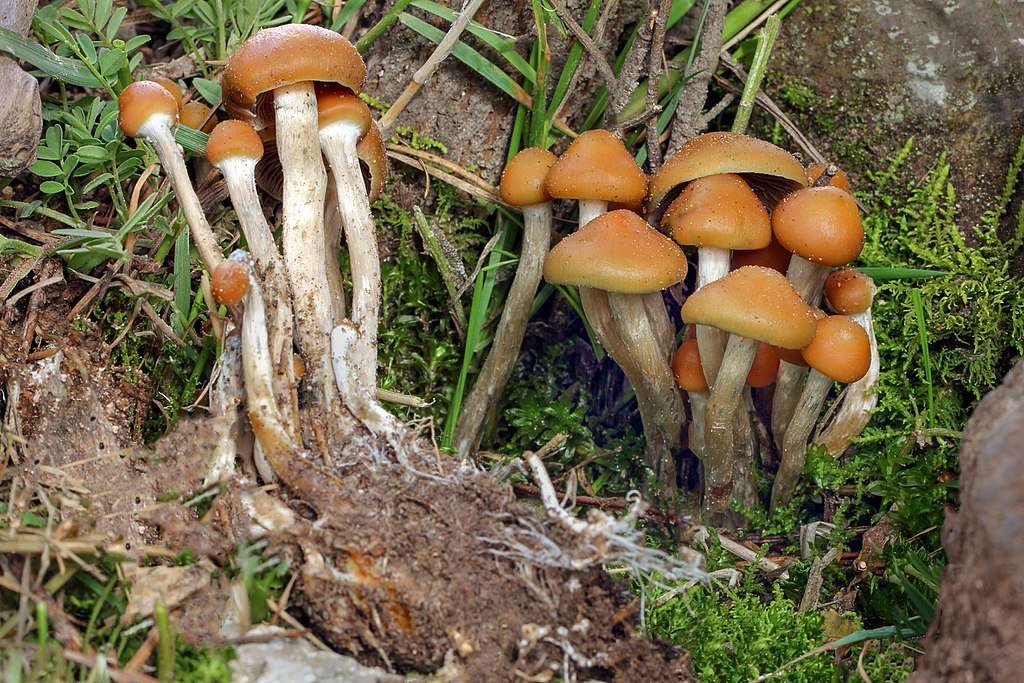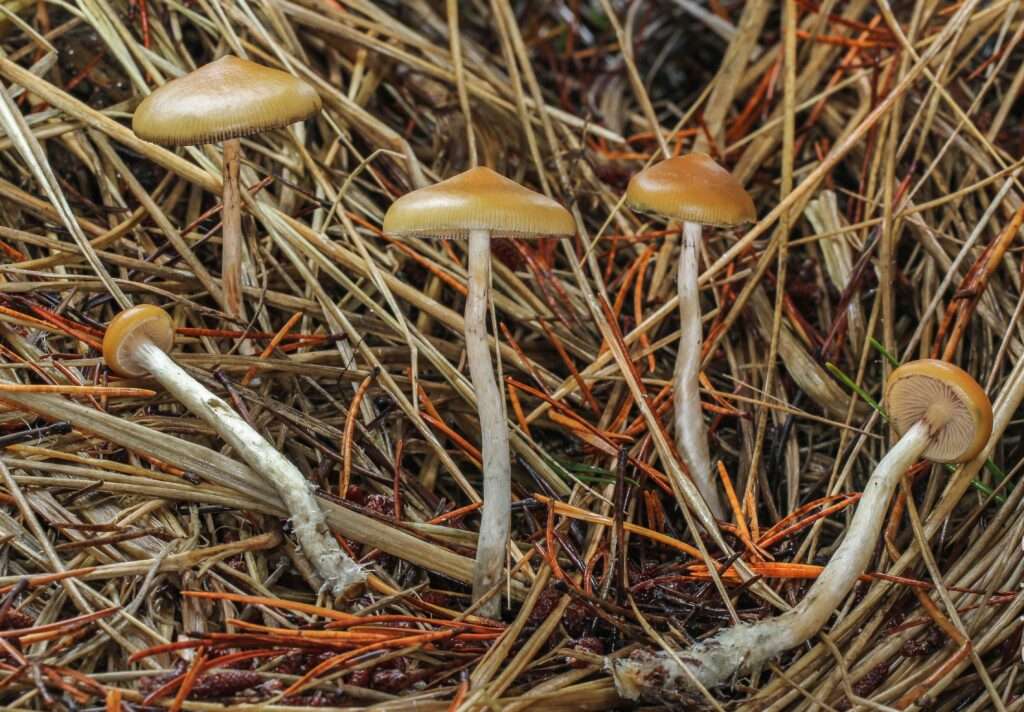
Scientific name
Gymnopilus junonius
Description
The cap of the laughing gym mushroom is domed to flat, 8–30 cm broad and can be brilliant yellow–orange or orangish or red-brown in older specimens. It also has a dry, scaly surface. The fruit is yellow, has a slight odor, and tastes unpleasant. The stalk is 1-5 cm thick, 5-25 cm long, and frequently narrows at the base. It does not stain blue or contain psilocybin, unlike its psychotropic cousins in the Psilocybe genus. However, smaller specimens may occasionally show bruising.

Habitat
Gymnopilus junonius may be found in South America, Australasia, and Europe. It grows in thick clusters on hardwood and conifer stumps and logs. The lowland, humid woodland regions near rivers are where you’ll find this mushroom most frequently.
Uses/Importance
Gymnopilus junonius has two compounds called bis-noryangonin and hispidin that are structurally linked to the alpha-pyrones in kava. This species has also been linked to oligoisoprenoids, a class of neurotoxins. It is toxic. Although it can seem delicious, you should not consume this mushroom. It has a bitter flavor and is hence not regarded as pleasant to eat. Having said that, Gymnopilus junonius is thought to cause hallucinations and spiritually enriching experiences in some cultures but the number of mushrooms needed to achieve the levels needed to cause effects is more likely to render you feeling nauseous before the impact is attained. The laughing gym mushroom’s psychedelic properties might be attributed to kava-like chemicals. Kava includes kavalactones, which have a number of psychotropic effects, such as lowering anxiety and stress levels and elevating feelings of drowsiness and well-being. Due to its hallucinatory properties, this deadly mushroom has earned the nickname Laughing Gym.
Table





